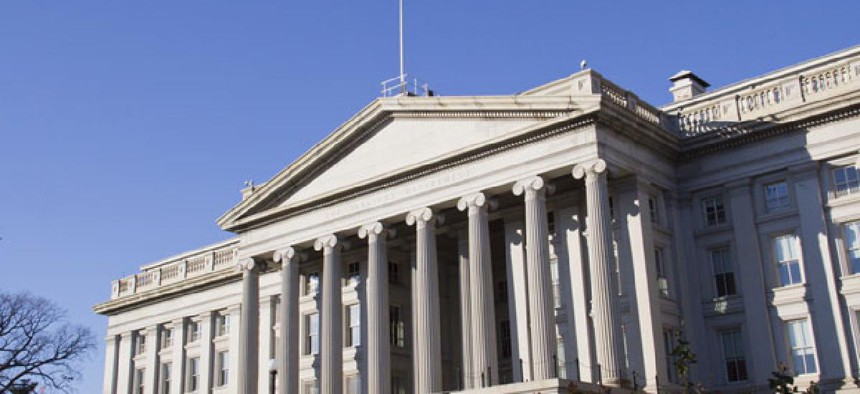
Mesut Dogan/Shutterstock.com
Treasury has options on debt ceiling but all of them are ugly
Report highlights four ideas and why they won't help avoid hitting the nation's borrowing limit next month.
If past is precedent, the Treasury Department has four responses to bumping up against the nation’s borrowing limit, none of them great.
Unless Congress acts, the federal government will likely hit its debt ceiling sometime between Feb. 15 and March 1, according to a recent analysis by the Bipartisan Policy Center. The administration has already sworn off two potential responses: using the 14th amendment to continue borrowing anyway and minting a $1 trillion platinum coin, which a Treasury spokesman this weekend said cannot and should not be used.
But neither were among the four ideas Treasury considered when the debt limit reared its head just a year and a half ago. None of those ideas offered much hope for averting disaster, though, according to a Treasury Inspector General’s report.
“Treasury reached the same conclusion that other administrations had reached about these options—none of them could reasonably protect the full faith and credit of the U.S., the American economy, or individual citizens from very serious harm,” Inspector General Eric Thorson wrote in an August report on the debt-limit crisis in the summer of 2011.
Here are the four ideas Treasury considered, and why officials decided each was less than ideal:
1. A “Fire Sale.” To raise money to pay for the government’s many ongoing commitments, Treasury considered selling assets, specifically gold, mortgage securities, investments from its Troubled Asset Relief Program, or the government’s portfolio of student loans, according to the report. But the officials quickly decided that doing so would reek of desperation or have negative unintended consequences.
2. Across-the-Board Cuts. Officials considered implementing a broad cut—say by 40 percent—to its many obligations, but decided that their computers probably wouldn’t be able to handle it: “Treasury’s payment systems are not designed to make such across-the-board cuts,” the officials concluded, according to the report.
3. Prioritizing Bills. Treasury considered picking and choosing which bills to pay, but officials decided Congress hadn’t granted the department such authority. “[T]here is no fair or sensible way to pick and choose among the many bills that come due every day,” they concluded. And, as with the cuts, the agency’s computers “are designed to make each payment in the order it comes due.”
4. Pay Bills as You Can. Officials determined that the idea of delaying payments was the “least harmful” of Treasury’s “very bad options.” The idea was simple: Treasury would pay in full the bills it can as money comes in. But they concluded that such delays would quickly snowball “potentially causing great hardships to millions of Americans and harm to the economy.”






